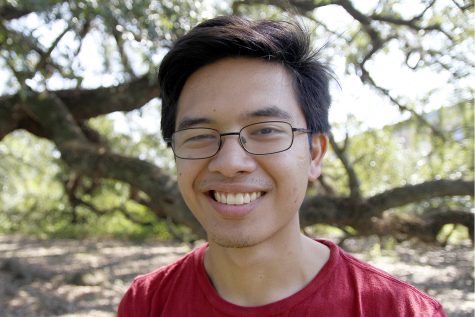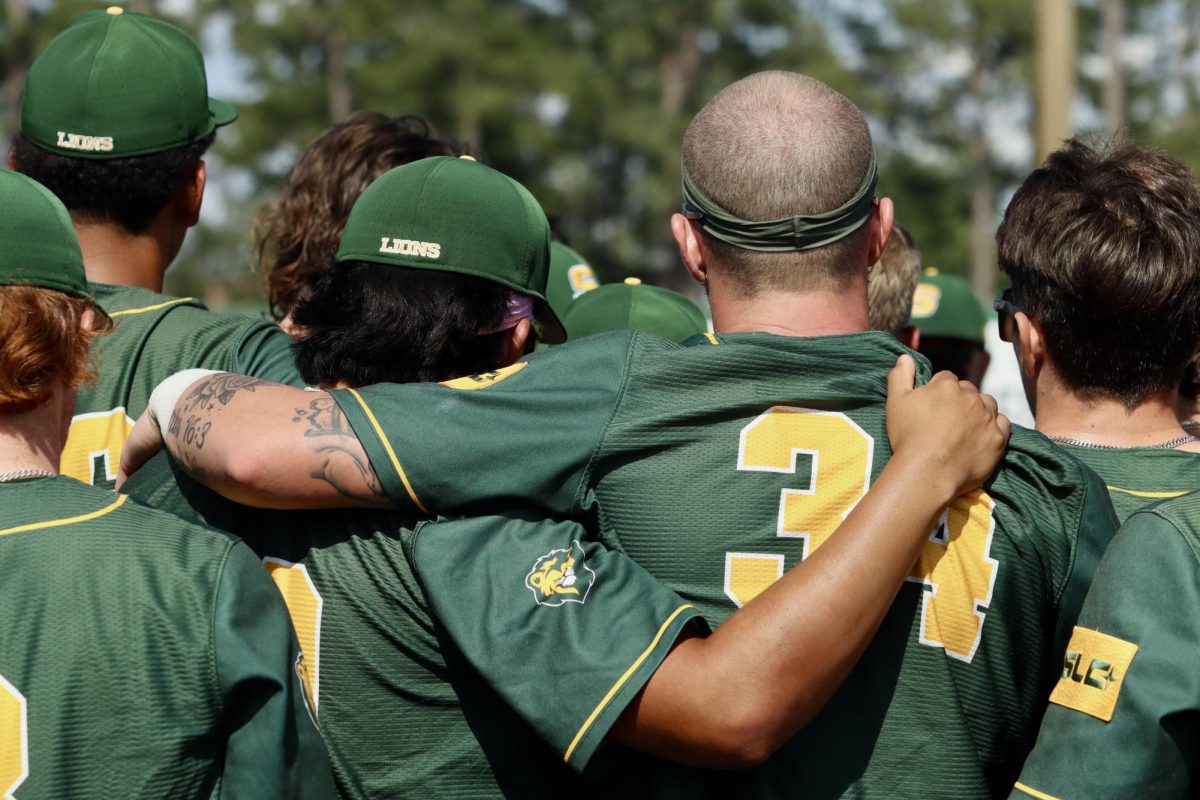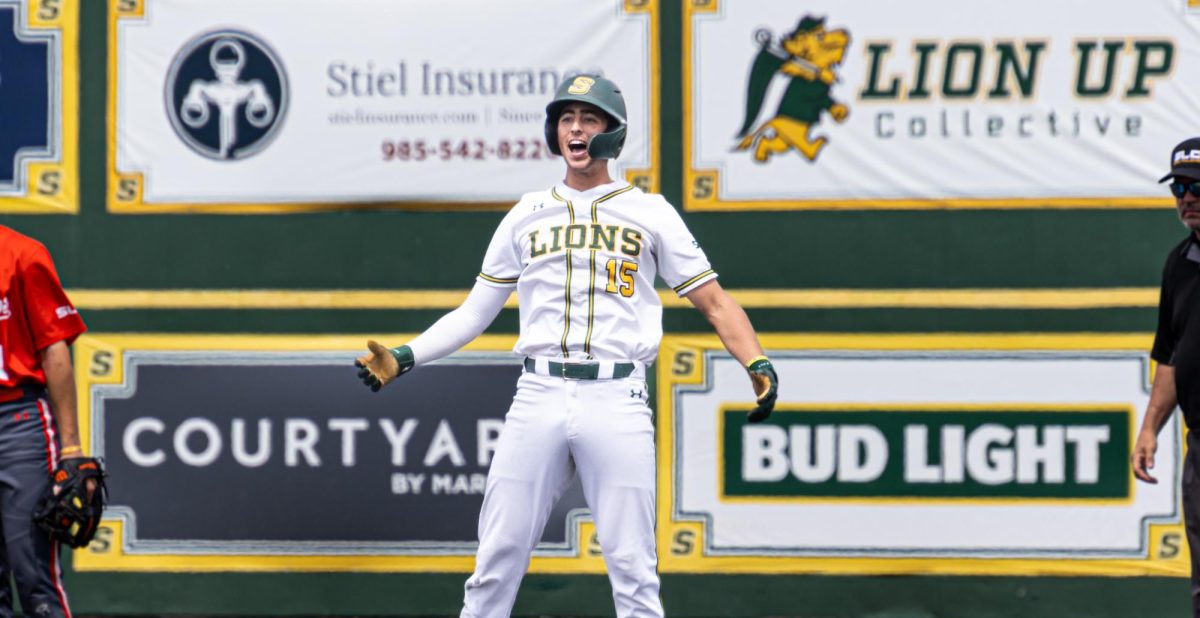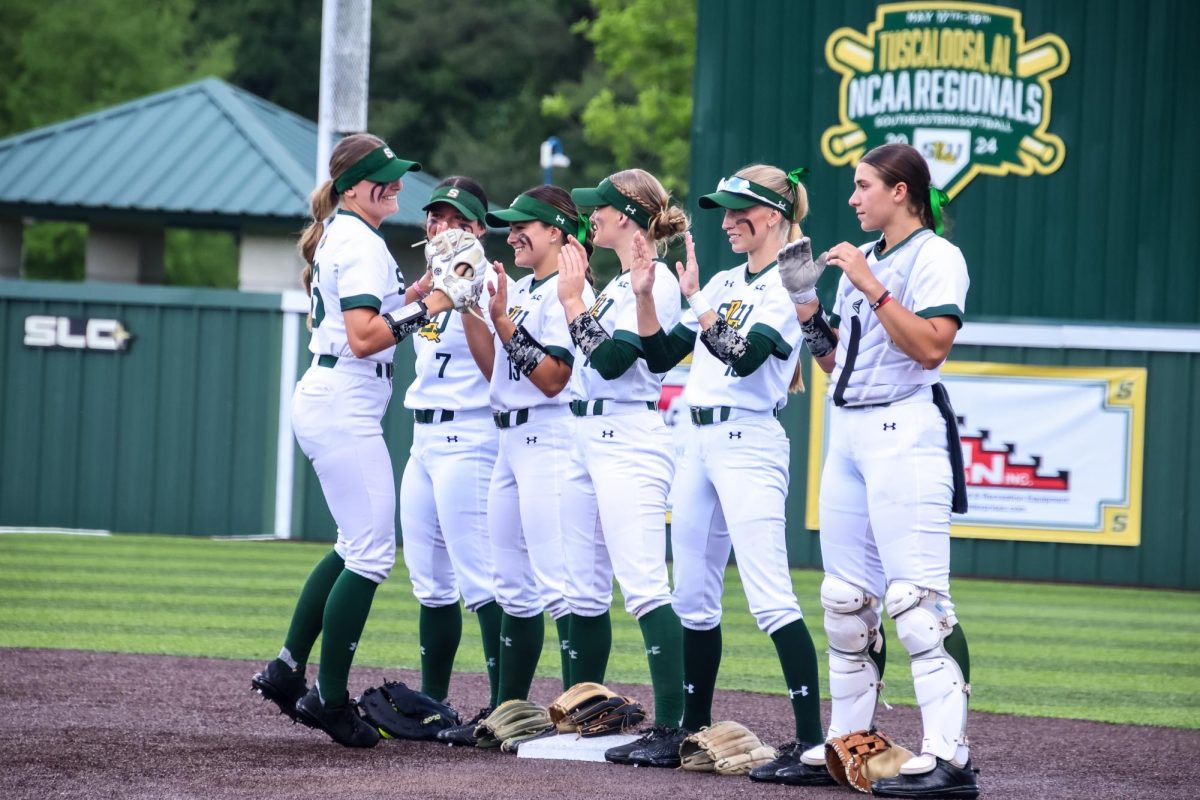
Sophomore mathematics and computer science major Kiran Shrestha participates in the research exhibited at the “Students’ Research, Creative and Scholarly Activities Showcase.” Zachary Araki/The Lion's Roar
Students presented their research on topics ranging from occupational safety to biology at the “Students’ Research, Creative and Scholarly Activities Showcase.”
“It’s a pretty cool way for students to express what they’re working on outside of the classroom ’cause you have projects and term papers and everything due during the semester, and this is extracurricular stuff that students like me and my colleagues are working on outside of class that has a real impact on real life and application,” said junior occupational safety, health and environment major William Barnett.
The Office of Sponsored Research and Programs put on the event in the Student Union Grand Ballroom on Tuesday, April 17 from 9 a.m. to 2 p.m.
“It’s important for undergraduate students and graduate students to have an opportunity to showcase their work in an environment that is not competitive at this point,” said Grants Development Specialist with the Office of Sponsored Research and Programs Margaret Adelmann. “I think they feel more comfortable participating since we don’t have judges and have rankings and that kind of thing. Another important part of it is that the students and faculty that attend to view the presentations, they get an idea what’s going on in other departments and colleges that they might not be aware of.”
The showcase included a bike that attendees could use to power a blender. The bike offered a way to promote a healthy lifestyle.
“We use it to help interest our children and young adults to make a smoothie but also have to kind of work for it so just to kind of link the healthy eating with physical activity,” said Instructor of Family and Consumer Sciences Heather Dykes. “It’s a lot harder than it looks. The more frozen food you put in, the more resistance you have on the bike. It’s a lot of fun. You can actually break a sweat when you’re making a smoothie.”
Dykes shared her thoughts on the showcase.
“Everybody’s interested in it,” said Dykes. “They don’t know what it is. They’re coming around asking a lot of questions, and then it’s fun. They have fun when they’re on it, and then they get to have the smoothie afterwards. It’s definitely an attention getter and keeper.”
Barnett presented his research on monitoring air quality and carbon dioxide levels in the computer science and technology building. Barnett and his group were tasked by the American Society of Safety Engineers to evaluate the new building.
“They wanted a baseline for the indoor air quality that they could build off of and in the future be able to tell how their HVAC system is performing over time,” said Barnett. “In exchange for that data and everything, we were entered for basically a contest with other schools doing similar projects for a $5,000 grant.”
Graduate student in biology Shelby Barrett presented her master’s thesis research on the effects of flooding levels and nutrients on the growth of wetland plant species.
“I wanted to get my research out there,” said Barrett. “I already had a poster. I’m almost done, so it’s really good practice for my dissertation and for engaging with the public in general about wetlands, why they’re important, what they can do for our coast and why it’s important to prioritize them for restoration.”
Senior occupational safety, health and environment major Gregg Landry presented his research on comparing and analyzing wastewater treatment technology. He shared why he decided to participate in the showcase.
“I was just proud of my work, and I wanted to show it off a little bit and educate others,” said Landry.
Adelmann discussed the benefit of having the Student Government Association sponsor and fund the event including paying to print the posters for students.
“They may have wanted to have a poster printed, but I know students are on a budget,” said Adelmann. “We all are, but SGA makes it possible for them to have a full color poster printed, and not only do they have it for this showcase, but if they were to go to a conference with a mentor or professor, it’s already done.”
According to Barrett, her research has application concerning river diversions in Louisiana’s coastal master plan.
“By better understanding how nutrients and water interact for dominant species, we might be able to better understand how the species composition will change once these river diversions are operational,” said Barrett.
Barnett shared where he would like to go forward from his research.
“I do want to do another project in the future,” said Barnett. “Maybe an independent study, on how the number of people in the room affects the CO2 levels and whether the fire protection occupancy levels are safe when it comes to CO2 levels in the room because when you talk, you breathe out CO2 and raise the level in the room.”







